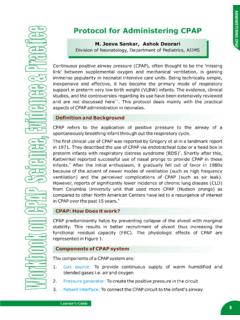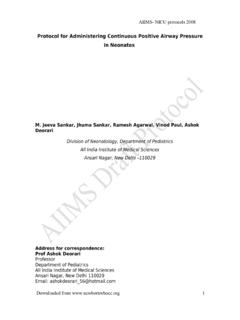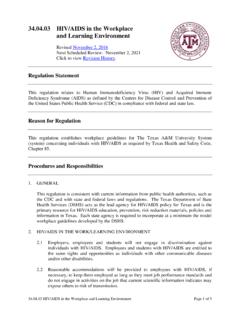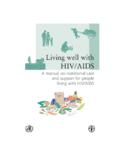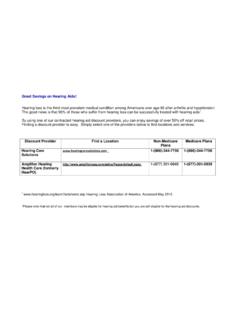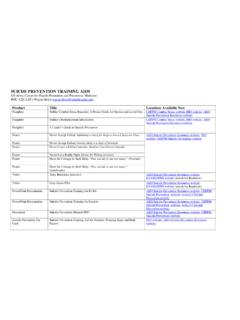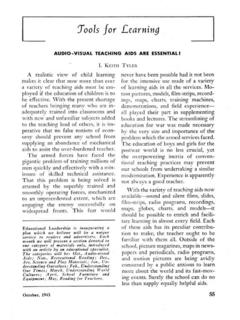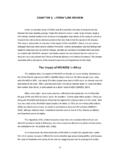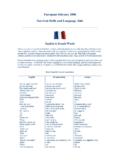Transcription of NNF Teaching Aids:Newborn Care
1 NNF Teaching Aids:Newborn Care neonatal sepsis Slide NS -1. Definition neonatal sepsis is defined as a clinical syndrome of bacteremia with systemic signs and symptoms of infection in the first 4 weeks of life. When pathogenic bacteria gain access into the blood stream, they may cause overwhelming infection without much localization (septicemia) or may get predominantly localized to the lung (pneumonia) or the meninges (meningitis). Slide NS -2. Importance neonatal sepsis is the single most important cause of neonatal deaths in the community, accounting for over half of them.
2 If diagnosed early and treated aggressively with antibiotics and good supportive care, it is possible to save most cases of neonatal sepsis . Slide NS-3. Etiology Most cases of neonatal sepsis in the community are caused by Escherichia coli and Staphylococcus aureus. In hospitals, Klebsiella pneumoniae is also a common organism. Slide NS-4. Early vs. late sepsis neonatal sepsis can be classified into two sub-types depending upon whether the onset of symptoms is before 72 hours of life (early onset) or later (late onset).
3 Early-onset infections are caused by organisms prevalent in the maternal genital tract or in the delivery area. The associated factors for early-onset sepsis include low birth weight, prolonged rupture of membranes, foul smelling liquor, multiple per vaginum examinations, maternal fever, 1. NNF Teaching Aids:Newborn Care difficult or prolonged labour and aspiration of meconium. Early onset sepsis manifests frequently as pneumonia and less commonly as septicemia or meningitis. Late-onset septicemia is caused by the organisms thriving in the external environment of the home or the hospital.
4 The infection is often transmitted through the hands of the care-providers. The onset of symptoms is usually delayed beyond 72 hours after birth and the presentation is that of septicemia, pneumonia or meningitis. The associated factors of late-onset sepsis include: low birth weight, lack of breastfeeding, superficial infections (pyoderma, umbilical sepsis ), aspiration of feeds, disruption of skin integrity with needle pricks and use of intravenous fluids. These factors enhance the chances of entry of organisms into the blood stream of the neonates whose immune defences are poor as compared to older children and adults.
5 Slide NS-5, 6, 7,8. Clinical features The manifestations of neonatal septicemia are often vague and therefore demand a high index of suspicion for early diagnosis (Table I). The most common and characteristic manifestation is an alteration in the established feeding behavior in late onset sepsis and respiratory distress in early onset sepsis . The baby, who had been active and sucking well, gradually or suddenly, becomes lethargic, inactive or unresponsive and refuses to suckle. Hypothermia is a common manifestation of sepsis , whilst fever is infrequent.
6 Diarrhea, vomiting and abdominal distension may occur. Episodes of apneic spells or gasping may be the only manifestation of septicemia. In sick neonates, the skin may become tight giving a hide- bound feel (sclerema) and the perfusion becomes poor (capillary refill time of over 3 seconds). Cyanosis may appear. A critical neonate may develop shock, bleeding and renal failure. 2. NNF Teaching Aids:Newborn Care TABLE 1: Clinical manifestations of neonatal sepsis Lethargy Cyanosis*. Refusal to suckle Tachypnea*.
7 Poor cry Chest retractions*. Not arousable, comatosed Grunt*. Abdominal distension Apnea/gasping*. Diarrhea Fever+. Vomiting Seizures+. Hypothermia Blank look+. Poor perfusion High pitched cry+. Sclerema Excessive crying/irritability+. Poor weight gain Neck retraction+. Shock Bulging fontanel+. Bleeding Renal failure * Particularly suggestive of pneumonia +. Particularly suggestive of meningitis The additional features of pneumonia or meningitis may be present depending upon the localization of infection in different systems and organs of the body.
8 The evidence of pneumonia includes tachypnea, chest retractions, grunting, early cyanosis and apneic spells in addition to inactivity and poor feeding. Cough is unusual. Findings on auscultation of the chest are non-specific and non- contributory. Meningitis is often silent, the clinical picture being dominated by manifestations of associated septicemia. However, the appearance of excessive or high-pitched crying, fever, seizures, blank look, neck retraction or bulging anterior fontanel are highly suggestive of meningitis.
9 A large WHO study published in 2003 identified nine clinical features which predict severe bacterial illness in young infants 1. Feeding ability reduced 2. No spontaneous movement 3. Temperature >38 C. 4. Prolonged capillary refill time 5. Lower chest wall in drawing 6. Resp rate > 60/minute 7. Grunting 3. NNF Teaching Aids:Newborn Care 8. Cyanosis 9. H/o of convulsions Slide NS- 9,10,11,12. Diagnosis Direct method Isolation of microorganisms from blood, CSF, urine, pleural fluid or pus is diagnostic.
10 Indirect method There are a variety of tests which are helpful for screening of neonates with sepsis . The most useful and widely used is the white blood cell count and differential count. An absolute neutrophil count of < 1800 per cmm is an indicator of infection. Neutropenia is more predictive of neonatal sepsis than neutrophilia but it may be present in maternal hypertension, birth asphyxia and periventricular hemorrhage. Immature neutrophils (Band cells + myelocytes + metamyelocytes) to total neutrophils ratio (l/T) >.


